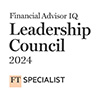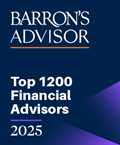It seems we can’t find what you’re looking for. Perhaps searching can help.
Are you financially prepared For a Relaxing Retirement?
Take The AssessmentDisclosures
Services are offered through Focus Partners Wealth, LLC (“Focus Partners”), an SEC registered investment adviser with offices throughout the country. Registration with the SEC does not imply a certain level of skill or training and does not imply that the SEC has endorsed or approved the qualifications of Focus Partners or its representatives. Prior to January 2025, Focus Partners was named The Colony Group (“Colony”), LLC. Focus Partners has been part of the Focus Financial Partners partnership since 2011. In December of 2019, D.K. Brede Investment Management Company merged with and into GW & Wade, LLC (“GWW”). On 03/01/24, GWW merged with and into The Colony Group, LLC. Clients of GWW assigned their advisory agreements to Colony. Information contained herein is general in nature and is provided for informational purposes only. Financial and investment advisory services are provided only through a formal advisory relationship. Awards listed are those received by Debra Brede, as applicable, at D. K. Brede Investment Management Company prior to the time GWW merged with Focus Partners Wealth. GWW paid a fee to Barron’s, Forbes, and Five-Star for use and promotion of the rankings, but not to be considered for the awards. No compensation was paid with respect to the other awards. The criteria and year(s) for each award listed above are as follows:
- Forbes Top Women Advisors and Top Women Wealth Advisors Best-In-State. Criteria: Award is based on an algorithm of qualitative and quantitative criteria, including a minimum of 7 years of experience, and factors such as revenue trends, AUM, compliance records, industry experience, and best practices. Debra Brede received the award in February 2025 based on data as of September 30, 2024. She also received the Top Women Advisors award from 2017 through 2024 and the Top Women Wealth Advisors Best-In-State award from 2022 through 2024.
- Forbes Best-in-State.Criteria: Award is based an algorithm of qualitative criteria, mostly gained through telephone and in-person due diligence interviews, and quantitative data, including years of experience, revenue trends, AUM, compliance records, client retention, best practices, and approach to working with clients. Debra Brede received the award in April 2025 based on data as of June 30, 2024. She also received the award from 2018 through 2024.
- Forbes America’s (Top 250) Wealth Advisors.Criteria: Award based on an algorithm of qualitative criteria learned through telephone, virtual and in-person due diligence interviews, and quantitative data such as revenue trends and assets under management. The algorithm additionally weighs factors such as service models, compliance records and industry experience, and focuses on those that encompass best practices in their approach to working with clients. Debra Brede received the award in April 2025 for the twelve months ending 06/30/24. She also received the award from 2016 through 2024.
- Barron’s Top 100 Women Financial Advisors.Criteria: Barron’s proprietary analysis of the following qualitative and quantitative criteria: a minimum of 7 years of financial services experience, acceptable compliance record, client retention, assets under management (AUM), revenues generated, and the quality of the advisor’s practice. A portion of the ranking considers a sampling of a financial advisor’s clients. Debra Brede received the award in July 2024 for the twelve months ending 03/31/24. She also received the award from 2006 through 2023.
- Barron’s Hall of Fame Advisor.Criteria: The award recognizes advisors who have ranked for ten or more years on any one of following Barron’s Top Advisor lists: Top 100 Financial Advisors, Barron’s Top Women Financial Advisors, or Top 100 Independent Advisors. Debra Brede received the award in 2019.
- Barron’s Top 1,200 Financial Advisor.Criteria: Barron’s creates its ranking based on a formula that takes into consideration three major categories, including assets, revenue, and quality of practice. Barron’s also considers a wide range of qualitative factors, including the advisor’s experience, their advanced degrees and industry designations, the size, shape, and diversity of their team, their charitable and philanthropic work and their compliance record. Debra Brede received the award in March 2025 for the twelve months ending 09/30/24. She also received the award in 2017, 2021,2022 and 2024.
- Financial Times 400 Financial Advisors.Criteria: FT recognized Debra Brede as a FT 400 Financial Advisors 2020. Financial Times creates a numeric score that is based on AUM, asset growth, compliance record, experience, credentials, and accessibility. AUM and AUM growth accounted for over 85% of the score. Although the survey was completed while Ms. Brede was at Commonwealth Financial Network, Focus Partners Wealth reasonably assumes the survey makes it equally easy for participants to provide both positive and negative responses. No fee was paid to FT 400 Financial Advisors to participate in, or to promote these rankings. Leadership Council Membership: FT recognized Debra Brede as a FT 400 Financial Advisors 2020. As a result of this recognition, Ms. Brede was invited to be a member of the Financial Advisor IQ Leadership Council for subsequent years. The leadership council is a membership that requires completion of surveys for research purposes and not qualification purposes. No fee was paid to be a member of this council.







